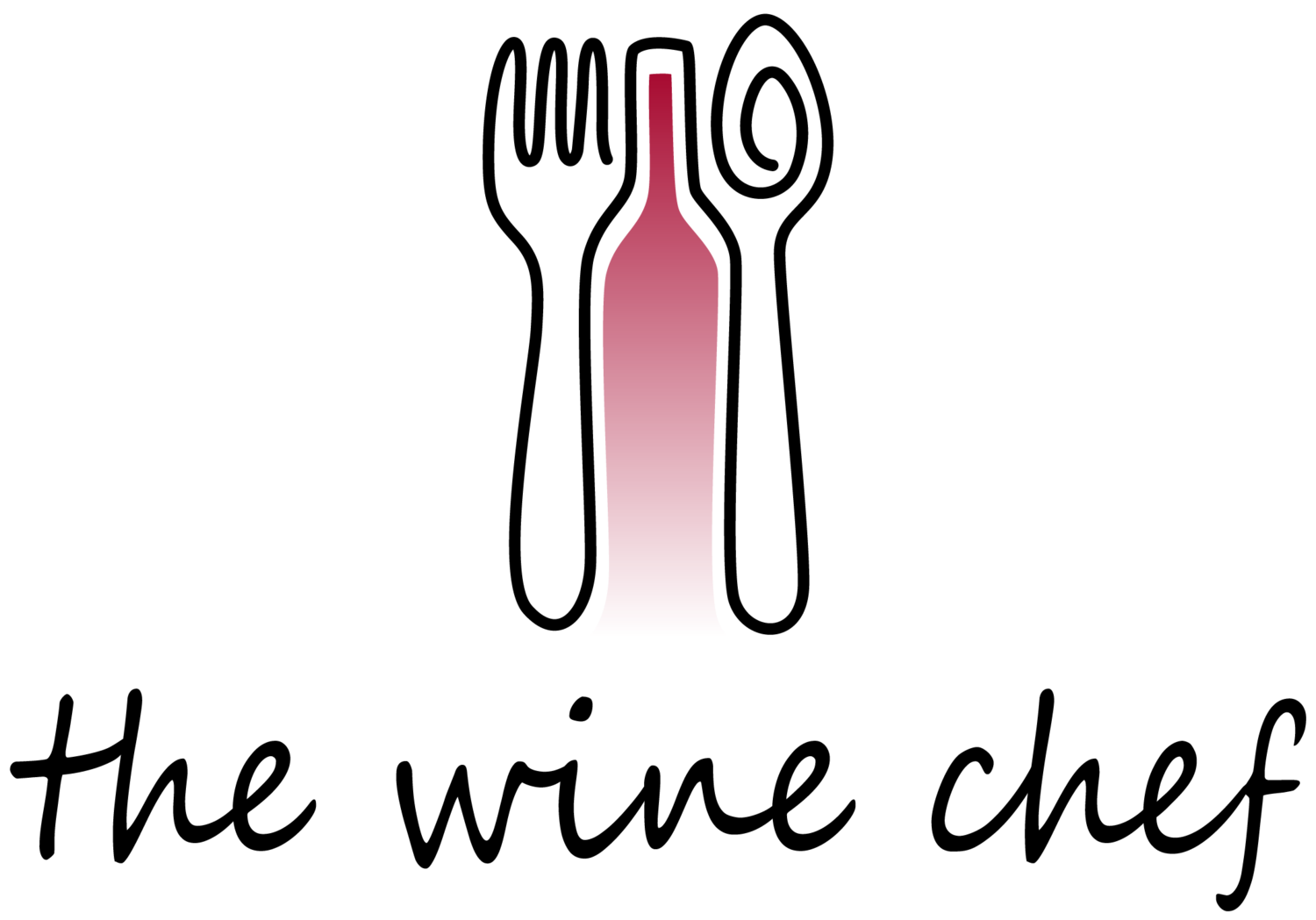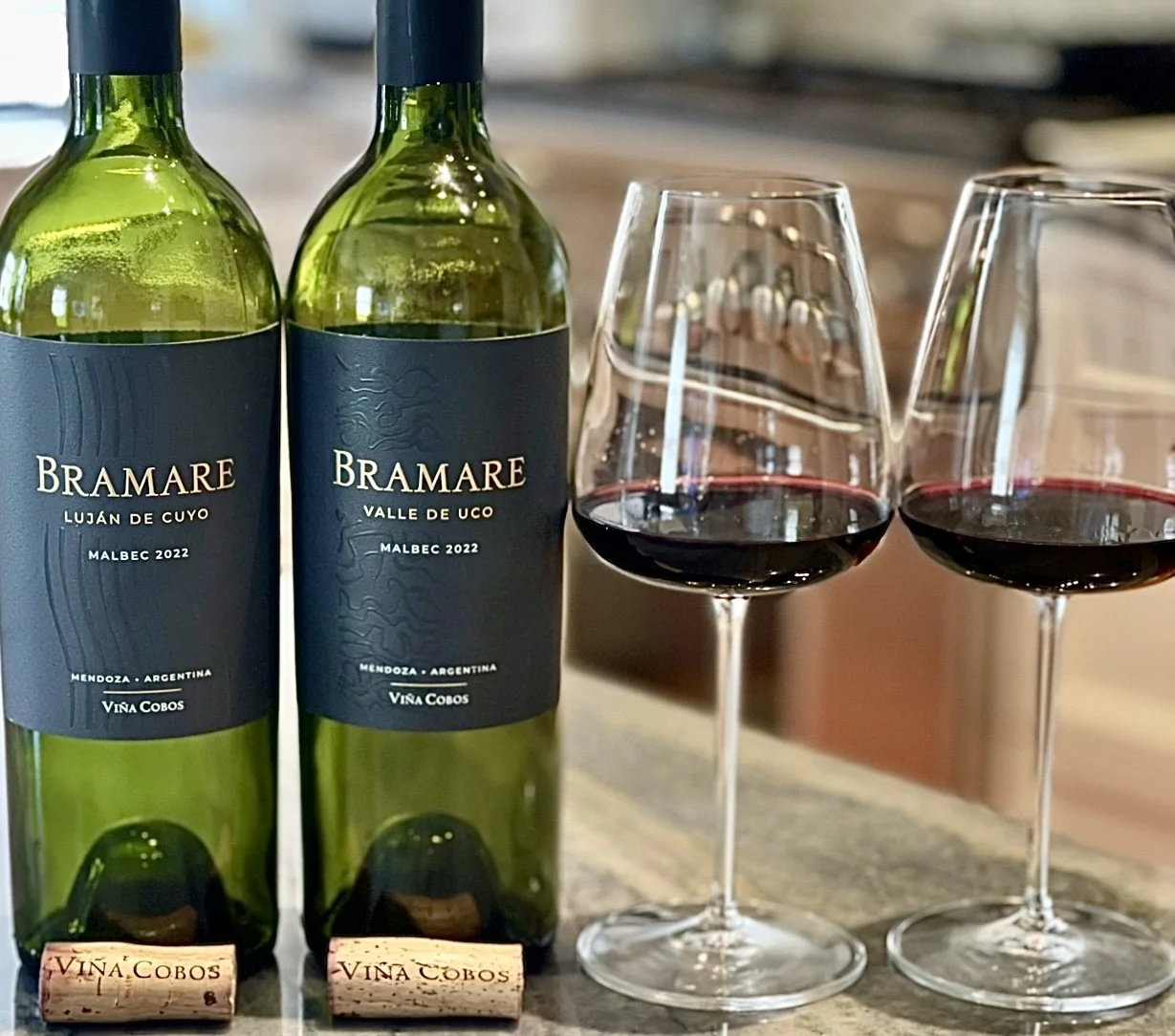Viña Cobos Bramare Malbec: A Tale of Two Terroirs
/Tasting two wines made from the same grape, vintage, and winemaker, but from two different vineyard sites, is one of the best ways to see how place shapes a wine. Not long ago, I did just that during a virtual tasting led by Paul Hobbs, featuring his Viña Cobos Bramare Malbecs from two of Mendoza’s key regions: Luján de Cuyo and Valle de Uco.
I’ve also visited the winery, and being there in person brings it to a whole new level. Walking through the vineyards, touching the soil, feeling the breeze, breathing the air, speaking with the team, and tasting the wines on-site vividly brings home the concept of site expression.
A Chance Turn Toward Argentina
Paul Hobbs, a well-known winemaker and winery consultant, first landed in Argentina in 1988—almost by accident. He was heading to Chile from California, where he was then the winemaker at Simi Winery, when a last-minute invitation led him to cross the Andes instead.
At the time, Argentina wasn’t known for high-quality wine. Most people thought Mendoza was simply too warm to produce anything serious. But Hobbs saw potential when he discovered an old Malbec vineyard in Lunlunta, owned by the Catena family. Fruit from those vines went into the 1994 Catena Alta Malbec, a wine Hobbs helped craft and one that’s now seen as a turning point for Argentine Malbec.
In 1999, Hobbs founded Viña Cobos with the intention to explore Malbec’s more nuanced side.
"The purpose of the venture was strictly to study the nobility of Malbec," Hobbs explained, reflecting on the trailblazing beginnings of Viña Cobos in 1999.
The wine's name, Bramare, means "to covet or to yearn for" in Italian, reflecting that early ambition and determination that drove Hobbs and his partners through the challenging early years.
"We were very poor, none of us had much money, but we had desire and we had passion, and we were going to make it no matter what," he reflects.
Photo of Paul Hobbs: @Vinacobos.
Two Regions, Two Styles
The 2022 Bramare Malbecs offer a clear example of how site influences wine.
a visual difference too: The Luján de Cuyo version tends toward garnet red, while the Valle de Uco wine has a deeper color, with violet and blue tones. Photo: Lisa Denning
The Luján de Cuyo Malbec is full and approachable. It opens with dark fruit notes, such as plum, cherry, and blueberry, along with hints of tobacco, licorice, and a subtle mineral undertone. The palate is generous and broad, with a velvety yet grippy texture. The finish is long and fresh, with subtle hints of spice and vanilla oakiness that complement rather than dominate the fruit.
In contrast, the Valle de Uco Malbec is more focused and structured. The tart fruit flavors lean darker here, bringing a brighter acidity and a savory, mineral edge that adds depth. It’s a wine that feels more lifted and energetic, yet with more tannins and texture, and a finish that lingers long after you’ve swallowed.
Digging Into the Differences
The contrast between the two wines primarily stems from their elevation and soil types. Luján de Cuyo, the original region for fine grape growing, sits at a high elevation by global standards—around 3,000 feet above sea level—which helps preserve freshness despite the region’s warm, sunny days. The predominantly clay-loam soils tend to make concentrated wines with rich fruit flavors and smooth tannins.
Valle de Uco, on the other hand, sits even higher up in the Andes, where sunlight is more intense and temperatures swing more dramatically between day and night. The rocky, calcareous soils are stony, with very little topsoil, which means the vines have to work harder to reach water and nutrients. That effort is reflected in the wine as increased structure, brighter acidity, and greater complexity.
Beyond the Comparison
What’s most interesting is how consistent the differences are across vintages. According to Hobbs, the Bramare Luján de Cuyo stays plush and smooth across every vintage, while the Valle de Uco Malbec always brings more tension and mineral character.
For Hobbs, the Bramare line reflects the evolution of over 25 years of work at Viña Cobos. The wines deliver what he set out to prove: that Malbec can speak of place, going far beyond the easy-drinking, fruit-forward style and tell a more nuanced story of depth and complexity.
Find Bramare wines on wine-searcher.com for around $49 SRP.







